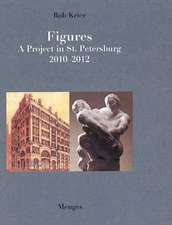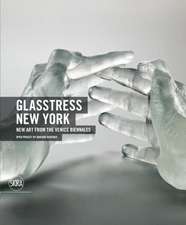Funerary Arts and Tomb Cult: Living with the Dead in France, 1750-1870
Autor SuzanneGlover Lindsayen Limba Engleză Paperback – 15 noi 2016
| Toate formatele și edițiile | Preț | Express |
|---|---|---|
| Paperback (1) | 469.34 lei 6-8 săpt. | |
| Taylor & Francis – 15 noi 2016 | 469.34 lei 6-8 săpt. | |
| Hardback (1) | 1068.88 lei 6-8 săpt. | |
| Taylor & Francis – 19 sep 2012 | 1068.88 lei 6-8 săpt. |
Preț: 469.34 lei
Nou
Puncte Express: 704
Preț estimativ în valută:
89.81€ • 96.04$ • 74.88£
89.81€ • 96.04$ • 74.88£
Carte tipărită la comandă
Livrare economică 17 aprilie-01 mai
Preluare comenzi: 021 569.72.76
Specificații
ISBN-13: 9781138261211
ISBN-10: 1138261211
Pagini: 276
Dimensiuni: 156 x 234 x 15 mm
Greutate: 0.45 kg
Ediția:1
Editura: Taylor & Francis
Colecția Routledge
Locul publicării:Oxford, United Kingdom
ISBN-10: 1138261211
Pagini: 276
Dimensiuni: 156 x 234 x 15 mm
Greutate: 0.45 kg
Ediția:1
Editura: Taylor & Francis
Colecția Routledge
Locul publicării:Oxford, United Kingdom
Cuprins
Contents: Introduction: revisiting 18th- and 19th-century French tombs; Reforming funerary cult in France 1750-1870; 18th-century France: rethinking sculpture and the body; The Bonchamps project: reinventing the effigy tomb; Louis-Philippe's tombs: burying a modern royal family; The poetics of the exhumed corpse I: a tomb for Napoléon; The poetics of the exhumed corpse II: the Cavaignac tomb; Bibliography; Index.
Notă biografică
Suzanne Glover Lindsay is Adjunct Associate Professor of the History of Art at the University of Pennsylvania, USA.
Recenzii
'This is a meticulously researched, consistently insightful book that makes a significant contribution to our understanding of the life of the dead, and the objects that accompanied them, in nineteenth-century France.' French History
'... this well-researched, thoughtful book contributes to our understanding of the gisant figure’s intriguing if limited revival, and to ongoing reflections about commemorative practices, sculpture in particular, the workings of historical memory, and the place of the dead in modern France.' French Studies
'Funerary Arts and Tomb Cult is superbly researched and clearly articulated, providing a synthesis of perspectives concerning funerary arts, tomb cult, and the mentalities that shaped them in France. Moreover, the importance of the body as it relates to funerary arts and tomb cult is brought to the forefront for the first time through Lindsay’s thematic investigation of the recumbent effigy. Important and thought-provoking, the book is a very welcomed addition to eighteenth- and nineteenth-century art-historical studies.' CAA Reviews
'... a well-researched, rewarding and ultimately fasinating work.' Church Monument
'... this well-researched, thoughtful book contributes to our understanding of the gisant figure’s intriguing if limited revival, and to ongoing reflections about commemorative practices, sculpture in particular, the workings of historical memory, and the place of the dead in modern France.' French Studies
'Funerary Arts and Tomb Cult is superbly researched and clearly articulated, providing a synthesis of perspectives concerning funerary arts, tomb cult, and the mentalities that shaped them in France. Moreover, the importance of the body as it relates to funerary arts and tomb cult is brought to the forefront for the first time through Lindsay’s thematic investigation of the recumbent effigy. Important and thought-provoking, the book is a very welcomed addition to eighteenth- and nineteenth-century art-historical studies.' CAA Reviews
'... a well-researched, rewarding and ultimately fasinating work.' Church Monument
Descriere
This book sheds new light on the interplay of the funerary arts, tomb cult and the mentalities that shaped them in France, over a period famous for profound and often violent change. Using previously untouched archival sources and period published material, this study proposes new and vital contexts for nineteenth-century France's celebrated funerary projects, often profoundly reinterpreting them, and brings to light significant enterprises that are little known today.
















